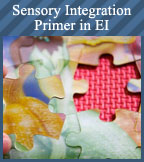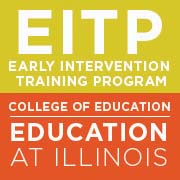The late Dr. A. Jane Ayers OT, PhD inspired the world of children by giving the therapeutic community an insightful theoretical framework to understand that sensory problems were more than symptoms of other disorders, such as autism, anxiety, or attention deficit hyperactivity disorder (ADHD). Instead, these children had difficulty properly integrating the cacophony of information coming through the senses, often causing anxiety, tantrums and problems at home or in the classroom. Based on studies she conducted, Dr. Ayers extrapolated unifying patterns in the perplexing and seemingly diverse behavior of these children. Some groups of children recoiled from the world of sensation because of hypersensitivity, or often did not feel pain in bumps and scrapes that would hurt the ordinary child, because of under-sensitivity.
Ayers postulated that, akin to other aspects of early child development (such as the five known developmental domains of early childhood), the sensory system in normal children developed over time. A child born with a fully organized sensory system can learn to integrate input from multiple sources (visual, auditory, proprioceptive or vestibular), and develop healthy (i.e., optimal) and output unimpeded praxis in their movement, learning, and emotional regulation. However, should suboptimal function occur anywhere in the vast complexity of this system, problems with processing – known as sensory integration dysfunction (SID) may occur, with children experiencing problems with their sense of touch, smell, hearing, taste, sight, body coordination, posture &/or movement against gravity. Weaving her findings into a a conceptual framework – a theoretical paradigm or model hypothesized by Dr. Ayers, she termed her thesis sensory integration.
Both intuitively appealing and a conceptual leap forward, SI pioneered a revolution in theory, diagnosis, and treatment for children. Fast-forward to the present mantle of SI leadership led by the Sensory Processing Disorder (SPD) foundation, a nosology change and new classification where sensory processing disorder are subdivided into specific patterns of function and subtypes. Sensory integration dysfunction (SID) occurs in one of several classification patterns of dysfunction including sensory aversion, lack of sensory response, or sensory craving – with accompanying levels of behavior and emotional challenges; alternately – or occurring in combination with the former, children may exhibit or one of several types of motor output difficulties – known as dyspraxia - in movement and speech, as well as learning (i.e. short term memory & sometimes a degree of difficulty with thought and perception). Identifying these patterns & subtypes is critical to the identification and the targeted sensory intervention treatment within the sensory integration framework.
As many as between 5%-16% of children (corresponding to a range of 1 in 5 or 1 in 20 children) having sensory processing difficulties – with many of them incoming kindergarteners. Today, Sensory Integration® is growing and expanding approach continues to be used, and is now known and practiced in over 100 countries worldwide. Learn about this invaluable treatment approach that revolutionized management of children with sensory dysfunction!
Sign up Now!

This program is offered for 0.45 ASHA CEU's (Intermediate Level, Professional)
ASHA LEARNERS PLEASE NOTE: There are 2 purchase options above, EI Continuing Education and CEU. If you wish to earn ASHA CEUs for this course and you select the CEU option, your information including name, address, e mail and ASHA ID, will be sent to ASHA CE. If you do not want your information sent to ASHA, please select the option for continuing education.

EITTOC is an AOTA Approved Provider of professional development. Course approval ID# 8922. This distance learning-independent is offered at 0.45 CEUs, introductory, OT service delivery/foundational knowledge. The assignment of AOTA CEUs does not imply endorsement of specific course content, products, or clinical procedures by AOTA or indicate AOTA approval of a certification or other professional recognition.
APPROVED BY THE ILLINOIS EARLY INTERVENTION TRAINING PROGRAM FOR EARLY INTERVENTION CREDENTIAL CREDIT for 3.5 Hours
Meets NY State (NYSOTA) Continuing Compliancy Requirements for continued Core Competency Hours (CCH)
Disclosure: David C Saidoff - course developer/presenter - has the following relevant financial relationships to disclose: he receives monetary compensation for the preparation of this course, in addition to a percentage of company sales, and has the following relevant non-financial relationships to disclose: EITTOC Board of Directors: volunteer member. Melissa Whelan, OTR - course developer/presenter - has the following relevant financial relationships to disclose: she receives monetary compensation for the preparation of this course, in addition to a percentage of company sales, and has the following relevant non-financial relationships to disclose: EITTOC Board of Directors: volunteer member. Dr. Robert Koppel, M.D.,FAAP, Diplomate of the American Board of Pediatrics has the following relevant financial relationships to disclose: he receives monetary compensation for the preparation of this course, in addition to a percentage of company sales, and has the following relevant non-financial relationships to disclose: EITTOC Board of Directors: volunteer member. Declaration: Approval of this course does not necessarily imply that any of the governing bodies (e.g., West Virginian Board of Physical Therapy, or other such governmental or NGO’s supports the views of the presenter or sponsor. Information provided should be used within the scope of practice. No relevant financial or non-financial relationships exists between EITTOC or the products discussed any course; no such relationship or endorsement exists for any products mentioned in any courses sponsored by EITTOC, or in any of the items (such as specific AED or Epinephrine injection product) or any testing instrument used to evaluate children; the above course is specific to said-topic, and may not be extrapolated to any other course or topic outside the scope of this course. Course instructor(s) have no other financial or non-financial remuneration - whether prior to or following course delivery; the above advertisement is made available to all physical therapy (and other) licensee on a non-discriminatory basis. Ascend has approved this course and may be contacted about any concerns. Information provided should be used within scope of practice. AOTA does not endorse specific course content, products, or clinical procedures. The onus of responsibility for this course – granted contact hours by the AOTA – is for each OT professional to check with their State board of OT to see if this course meets licensure requirement for continuing education. |









